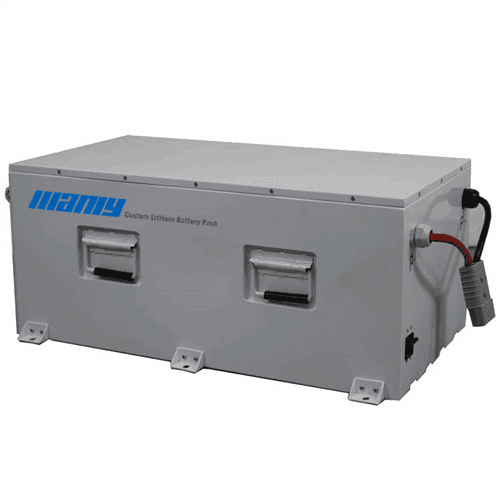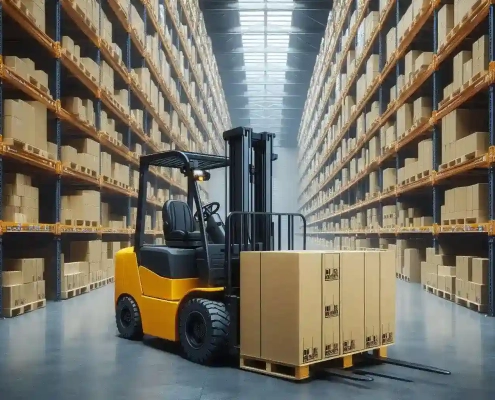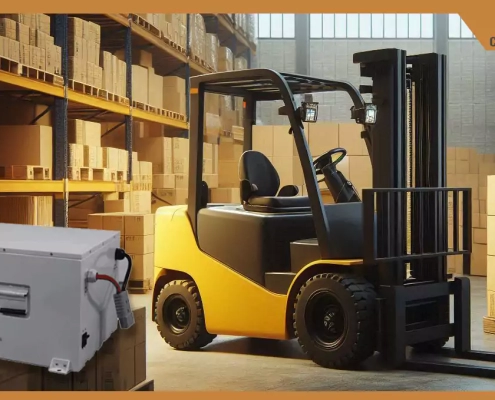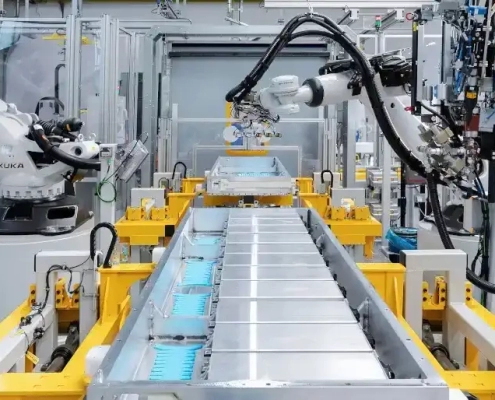Forklift Battery Replacement Cost Factors
Battery for Forklift Lifespan and Replacement Frequency
The lifespan and replacement frequency of a battery for forklift play a crucial role in determining the overall cost of replacement. Typically, a forklift battery is designed to last around 1,600 charge cycles. After about 1,600 charges, the battery’s capacity drops below 80% of its original capacity, necessitating replacement. Regular use and proper maintenance are key to reaching or even exceeding this lifespan.
Forklift Battery Maintenance Requirements
Proper forklift battery maintenance is another significant factor affecting costs. Maintenance includes regular checks on the battery’s charge level, adding distilled water as needed, and cleaning the terminals to prevent corrosion. Proper maintenance extends the battery’s life and improves its performance, reducing the frequency of replacements. Neglecting maintenance can lead to premature failure and higher costs.
Battery Charging Time and Operational Downtime
Battery charging time and operational downtime also influence replacement costs. Standard charging methods usually require about 8 hours for a full charge, plus an additional 8 hours for cooling, totaling 16 hours. This downtime can impact operations, especially in multi-shift environments where forklifts are in constant use. Quick charging options or battery swapping systems might be employed to minimize downtime, albeit at an increased cost.
Battery Efficiency and Energy Savings
Finally, battery efficiency and energy savings are crucial considerations. Modern batteries, especially lithium ion options, offer higher efficiency and better energy savings compared to traditional lead-acid batteries. Although the upfront cost of lithium batteries might be higher, their longer lifespan and lower maintenance requirements can result in significant cost savings over time. Choosing a more efficient battery can also reduce electricity costs and contribute to a greener, more sustainable operation.
Comparing Lead Acid vs. Lithium Ion Forklift Battery
Initial Cost vs. Total Cost of Ownership
When comparing the initial cost of a lead acid forklift battery to a lithium ion forklift battery, lead-acid batteries are typically cheaper. A lead-acid battery can cost between $5,000 and $12,000, while a lithium ion battery ranges from $17,000 to $20,000. However, the total cost of ownership tells a different story. Lithium ion batteries last longer, often up to 3,000 cycles, compared to the 1,500 cycles of lead-acid batteries. This means fewer replacements and lower long-term costs.
Maintenance Differences
Maintenance requirements are another crucial factor. Lead acid forklift batteries need regular watering, terminal cleaning, and careful charging practices to maintain their performance. Neglecting these tasks can shorten the battery’s lifespan. In contrast, a lithium ion forklift battery requires minimal maintenance. These batteries do not need watering and have lower risks of corrosion, saving time and labor costs.
Operational Efficiency and Safety
Operational efficiency and safety are significantly better with lithium ion forklift batteries. Lithium ion batteries are lighter and more compact, improving the forklift’s maneuverability and energy efficiency. They also maintain a consistent power output until they are nearly depleted, unlike lead-acid batteries, which gradually lose power. Safety is another advantage. Lead-acid batteries can leak acid and emit harmful gases during charging, requiring special ventilation and handling. Lithium ion batteries do not pose these risks, making them safer for workers.
Battery Charging Convenience and Time
The convenience and time required for charging also favor lithium ion forklift batteries. Lead-acid batteries typically need 8-12 hours to charge and an additional cooling period, which can disrupt operations. On the other hand, lithium ion forklift batteries can be fully charged in 1-2 hours without a cooling period. This rapid charging capability reduces downtime and keeps forklifts in operation, enhancing overall productivity.
In summary, while lead acid forklift batteries might have a lower initial cost, the lithium ion forklift battery offers significant benefits in terms of maintenance, efficiency, safety, and overall cost of ownership. For many businesses, investing in lithium ion batteries can lead to greater long-term savings and operational advantages.
Guidelines for Selecting the Most Cost-Effective and Efficient Battery for Forklift
Importance of Considering Long-Term Forklift Battery Cost
When choosing a battery for forklift, it’s crucial to look beyond the initial purchase price and consider the long-term forklift battery cost. While lead-acid batteries are cheaper upfront, their shorter lifespan and higher maintenance needs can lead to increased costs over time. A lithium ion forklift battery has a higher initial cost but lasts longer and requires less maintenance, ultimately saving money in the long run. Evaluating the total cost of ownership will help ensure you make a wise investment.
Evaluating Warehouse Operational Needs and Battery Specifications
Understanding your warehouse’s operational needs is essential for selecting the right battery for forklift. Consider factors such as the frequency of use, the weight of the loads, and the working hours. For instance, if your warehouse operates multiple shifts, the fast charging capability of a lithium ion forklift battery can be a significant advantage. These batteries charge in 1-2 hours compared to the 8-12 hours needed for lead-acid batteries, reducing downtime and improving productivity. Additionally, lithium ion batteries maintain a consistent power output, ensuring your forklifts perform efficiently throughout the shift.
Recommendations Based on Forklift Battery Replacement and Performance
For businesses focused on long-term efficiency and reduced downtime, investing in lithium ion forklift batteries is highly recommended. These batteries offer a longer lifespan, typically up to 3,000 cycles, compared to 1,500 cycles for lead-acid batteries. This means fewer replacements and less operational disruption. Furthermore, the low maintenance requirements of lithium ion batteries save on labor costs and reduce the risk of human error in maintenance tasks.
In summary, when selecting a battery for forklift, it is essential to consider the long-term costs, operational needs, and specific battery performance. While lead-acid batteries may be cheaper initially, the benefits of lithium ion forklift batteries in terms of lifespan, maintenance, and efficiency make them a more cost-effective choice over time.
MANLY Battery: Top Lithium Forklift Battery Solution
MANLY Battery is a leading provider of lithium forklift battery. With over 13 years of experience, MANLY is known for its dedication to quality and innovation. Our batteries are designed to meet the demanding needs of modern warehouses, offering superior performance and efficiency.
Our lithium forklift batteries stand out for their long lifespan, fast charging times, and low maintenance requirements. Unlike traditional lead-acid batteries, our lithium batteries can last up to 3,000 cycles and charge in just 1-2 hours. This reduces downtime and keeps your forklifts running smoothly.
MANLY’s production capacity is impressive, with daily outputs of over 3,000 batteries. Our manufacturing facilities in Shenzhen, Dongguan, and Huizhou ensure we meet high demand without compromising quality.
Safety is a top priority at MANLY. Our batteries include features like short circuit protection, overcharge safeguards, and overcurrent prevention. These features ensure our batteries are safe to use in any environment.
Choose MANLY Battery for reliable, efficient, and safe lithium forklift batteries that keep your operations running at peak performance.
Conclusion
Selecting the right battery for your forklift is more than just considering the initial cost. It’s essential to evaluate long-term forklift battery cost, maintenance requirements, operational efficiency, and the specific needs of your warehouse. While lead acid forklift batteries might be cheaper upfront, the lithium ion forklift battery offers better performance, longer lifespan, and reduced downtime, making it a more cost-effective choice over time. Investing in lithium ion forklift batteries can lead to significant savings and improved operational efficiency, ensuring your forklifts run smoothly and effectively.






